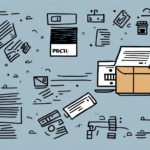Importance of Return Reason Types in FedEx Ship Manager
Return reason types within FedEx Ship Manager are crucial for businesses to effectively track and understand the motivations behind returned shipments. This data is instrumental in identifying and resolving issues related to products, operational processes, and overall customer satisfaction. By leveraging a comprehensive range of return reason types, businesses can process returns more efficiently and accurately.
Analyzing return reasons provides valuable insights into business performance. Patterns and trends revealed through return data can indicate broader issues with products or services, enabling businesses to implement improvements that reduce future returns and bolster customer loyalty.
Customizing Return Reason Types to Fit Your Business
How to Customize Return Reason Types
FedEx Ship Manager offers the flexibility for businesses to customize their return reason types, allowing for a more tailored approach to return management. To customize return reasons, log into your FedEx account, navigate to the "Return Reasons" section, and add, edit, or delete return reason types as needed. This customization ensures that the return reasons align with your specific business requirements and policies.
Best Practices for Customization
When customizing return reason types, it is essential to prioritize clarity and relevance. Ensure that each return reason is specific enough to provide actionable insights. Additionally, regularly review and update the return reasons to reflect any changes in your business operations or product offerings.
Common Return Reason Types and How to Address Them
Most Common Return Reasons
- Product Damaged in Transit: Items that arrive damaged due to mishandling during shipping.
- Wrong Item Shipped: Customers receive an incorrect product.
- Product Defective: Items that are faulty or malfunctioning.
- Buyer's Remorse: Customers change their mind after the purchase.
- Product Not as Described: Discrepancies between the product received and its description.
- Size or Fit Issues: Products, especially apparel, do not fit as expected.
Tips for Choosing the Right Return Reason
When selecting a return reason, provide as much detail as possible to help identify and resolve underlying issues. Accurate selection ensures that appropriate actions are taken to prevent future returns.
Common Errors to Avoid
Avoid selecting generic or inappropriate return reasons, as this can lead to confusion and delays in processing returns. Additionally, refrain from choosing multiple return reasons for a single return, unless absolutely necessary.
Leveraging Historical Data from Return Reasons
Using Data to Improve Operations
Historical data from return reasons can highlight recurring issues, enabling businesses to make informed decisions about product design, quality control, and customer service. For instance, a high percentage of returns due to sizing issues may prompt a revision of sizing charts or the introduction of more detailed product descriptions.
Accurate Reporting Essentials
Accurate reporting ensures that return data is reliable and actionable. Implementing a return reason code system and conducting regular audits can help maintain data integrity.
Training Your Team for Effective Return Management
Effective return management begins with proper training. Employees should be educated on selecting the appropriate return reason types, accurately recording data, and understanding the implications of return data on business operations. Regular training sessions and clear documentation can enhance the efficiency of the return process.
Addressing Customer Concerns Through Return Data
Detailed return reason data allows businesses to understand and address customer concerns more effectively. By identifying the root causes of returns, businesses can implement targeted solutions that enhance customer satisfaction and loyalty.
Future of Return Reason Types in FedEx Ship Manager
FedEx Ship Manager is continually evolving to meet the dynamic needs of businesses. Future developments may include more specialized return reason types, enhanced data analytics capabilities, and improved integration with other business systems to further streamline the return process.
Staying updated with these innovations can help businesses maintain efficient return management practices and adapt to changing market demands.




















